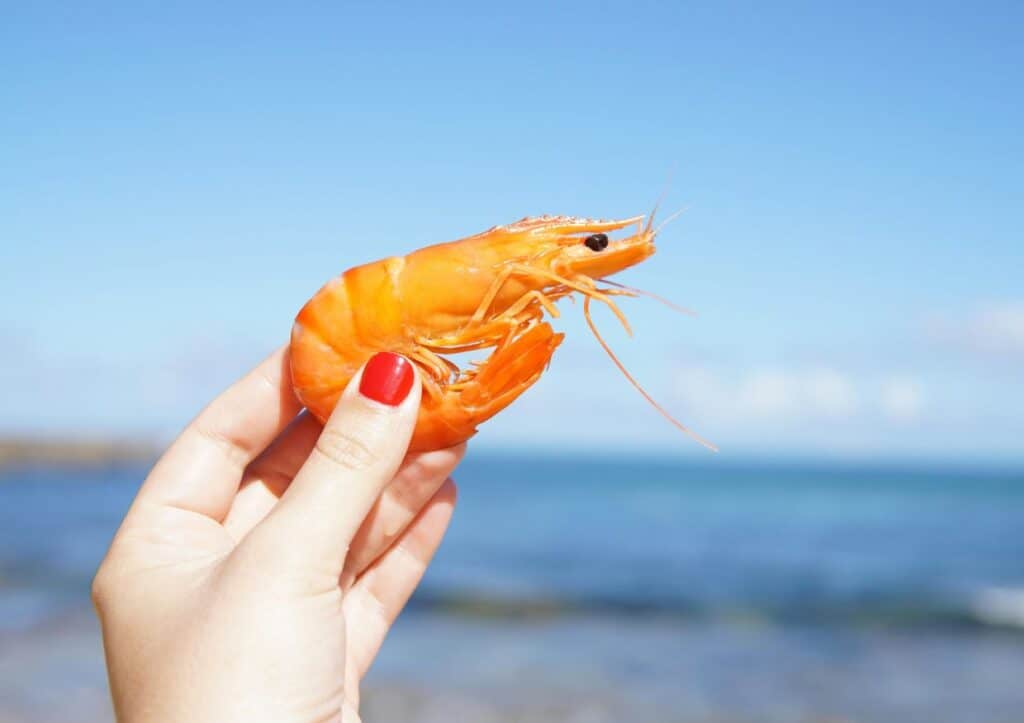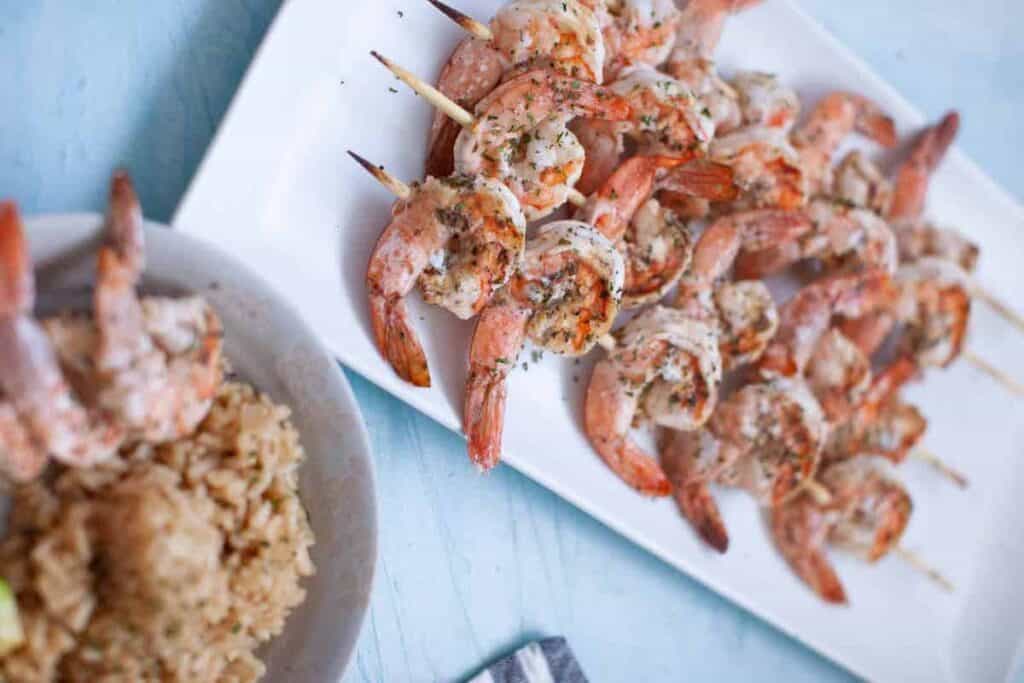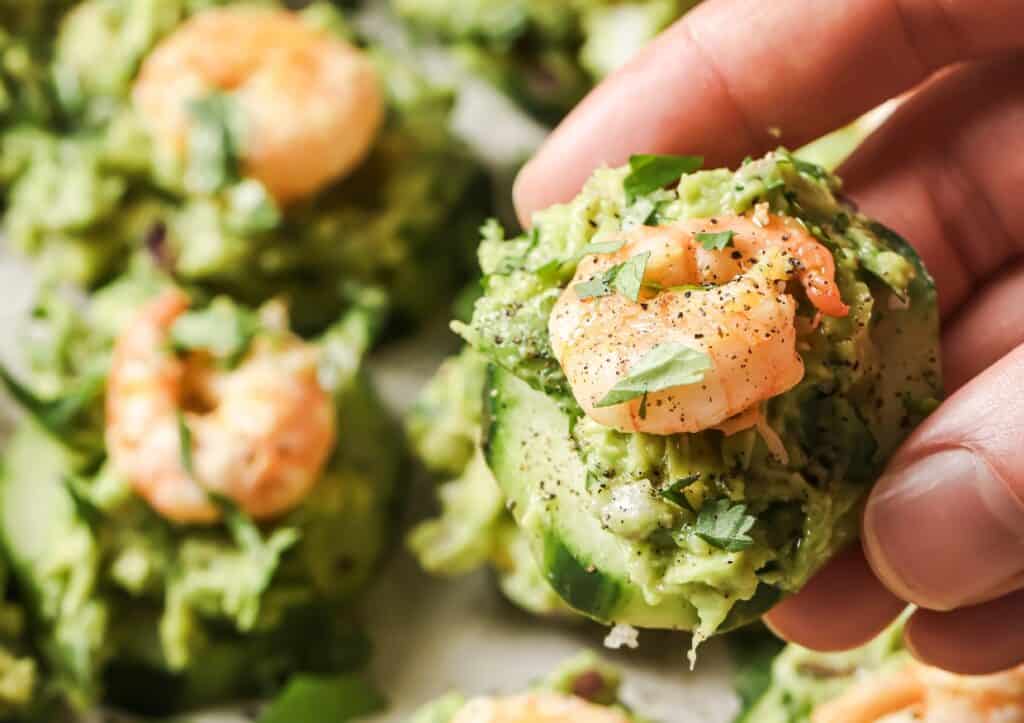Shrimp is a versatile and beloved seafood, perfect for a variety of dishes. This article explores different types of shrimp so you can choose the best option for your culinary creations and the environment.

Shrimp comes in a variety of types and sizes — each with unique characteristics that influence their flavor and culinary uses. From the warm waters lapping at the Gulf Coast to the vast ocean floor, these versatile crustaceans play a pivotal role in marine ecosystems and our diets.
When it comes to seafood, Americans love shrimp. According to the National Fisheries Institute, the average American consumes nearly six pounds of shrimp a year — more than any other type of fish or crustacean.
Whether you’re grilling shrimp skewers, ladling shrimp gumbo over fluffy white rice or preparing a light shrimp salad for lunch, this guide will introduce you to the key types of shrimp. It also explains their sizes and helps you choose the best variety for your favorite dishes.
Is shrimp healthy?
Shrimp is not only delicious but also packed with nutrients. According to the U.S. Food and Drug Administration, a 3-ounce serving of shrimp has 100 calories and 21 grams of protein.
In addition to being low in calories and high in protein, shrimp is rich in several important vitamins and minerals, including:
- Selenium: The National Institutes of Health identifies shrimp as a good source of selenium, with one 3-ounce serving providing about 76% of the daily recommended intake. Selenium is a crucial nutrient for maintaining health, supporting reproduction, thyroid function, DNA production and protecting the body from free radical damage and infection.
- Vitamin B12: According to the FDA, one cup of steamed shrimp contains 1.23 µg of B12. That’s more than half the daily amount recommended by the National Institutes of Health. Vitamin B12 is essential for healthy blood and nerve cells, DNA production and the prevention of megaloblastic anemia, which causes fatigue and weakness.

Common types of shrimp
It might surprise you to learn that, according to Britannica, there are more than 2,000 shrimp species. However, you’ll only see a handful of types behind the seafood counter on a dinner plate. Below are some of the most well-known types of shrimp.
White shrimp
White shrimp are a staple in seafood cuisine, perhaps because they are tender with easy-to-peel shells. They have a sweet, clean flavor and a firm texture that holds up well in a variety of preparations. White shrimp can grow quite large, often reaching up to 8 inches long, making them a versatile choice for many dishes. According to NOAA Fisheries, “Almost all of the white shrimp harvested in the United States come from the Gulf of Mexico, mainly from Louisiana and Texas.”
Brown shrimp
Brown shrimp are great for shrimp boils, Louisiana-style BBQ shrimp and other dishes that allow them to soak up the dish’s other flavors. They have a firm texture and slightly salty taste that makes them a perfect compliment to other seafood like salmon and scallops. U.S. wild-caught brown shrimp are an eco-friendly seafood choice because they are sustainably managed and responsibly harvested.
“When I lived near the Gulf of Mexico, there was nothing better than fresh Texas brown shrimp just hours old. Now that I’m landlocked, my favorite shrimp is Argentinean wild-caught shrimp. They’re widely available and have a better flavor and quality than some other imported shrimp.”
— Chef Jenn Allen, Dinner by Six
Pink shrimp
When you think of shrimp, you are most likely envisioning pink shrimp. They are known for their mild flavor and slightly sweet taste. They work well in dishes that feature delicate sauces, like shrimp scampi and shrimp and grits. Because they are larger shrimp, these crustaceans are good for shrimp cocktails and grilling.
Shrimp sizes
Shrimp size is typically measured based on the count per pound. The bigger they are, the less you get, which sounds suspiciously like a diet plan to me. Shrimp sizes range from extra colossal — less than 10 shrimp per pound — to salad shrimp, which is more than 70 shrimp per pound.
Fresh shrimp vs frozen shrimp
When it comes to choosing between fresh and frozen shrimp, there are a few key points to consider. Fresh shrimp, if truly fresh and properly stored, can offer a slightly better texture and flavor. However, the term fresh can be misleading since shrimp might be several days old by the time they reach your grocery store.
On the other hand, frozen shrimp are usually flash-frozen shortly after being caught, which locks in their freshness and flavor. This makes them a reliable option year-round. Plus, frozen shrimp are often more affordable and can be defrosted quickly for convenient use in any dish. So, unless you have access to truly fresh shrimp, frozen shrimp are probably your best bet.
“I love to stock up on frozen shrimp when they go on sale. They defrost quickly in the refrigerator or under running water, so advanced planning isn’t really required. Frozen shrimp is often preserved with salt, so always rinse and pat dry to decrease the sodium content.”
— Marjory Pilley, Dinner-Mom
Wild-caught shrimp vs farmed shrimp
Choosing between wild-caught and farmed shrimp is a lot like the wild-caught versus farm-raised debate surrounding salmon. Wild-caught shrimp are harvested from their natural habitats, while farmed shrimp are raised in controlled environments.
Wild shrimp, like those harvested from their natural habitats in the Gulf of Mexico or the coastal region of North Carolina, are often praised for their superior taste and texture. However, they can be more expensive due to stringent regulations and sustainable fishing practices aimed at protecting marine ecosystems. They can also be harder to find the farther you live from the coast.
Farmed shrimp, on the other hand, are raised in controlled environments, which can result in a more consistent product available year-round and often at a lower cost. While some farmed shrimp are raised sustainably, others may involve the use of antibiotics and chemicals, raising concerns about their environmental impact and food safety.

Selecting sustainable shrimp
Shrimp are vital to maintaining the ecological balance of our lakes and oceans. Not only do they help keep our waters clean, but they are an important food source for larger fish and other sea creatures. Thus, sustainable shrimp fishing is crucial. According to the University of Washington’s Sustainable Fisheries program, U.S. wild-caught shrimp are often the most sustainable option due to strict regulations and eco-friendly methods like smaller nets and traps. These practices help protect marine habitats and maintain shrimp populations.
Farmed shrimp can also be sustainable if certified by organizations like the Marine Stewardship Council, which ensures responsible practices such as minimizing chemical use and preserving mangrove habitats. However, if not properly regulated, farmed shrimp can cause pollution and habitat destruction. The Seafood Watch guide published by the Monterey Bay Aquarium provides additional tips for making sustainable choices when buying shrimp.
Shrimply the best
Shrimp are not just yummy, they are also versatile and nutritious. Whether you choose fresh or frozen, understanding the different types of shrimp and their sizes can help you make delicious and sustainable choices.
Living with the culinary challenges of a tick-borne food allergy, Sage Scott creates and shares delicious mammal-free recipes at Sage Alpha Gal. From her Kansas City home, she inspires not only fellow alpha-gal syndrome sufferers, but also vegans, vegetarians, pescetarians, and flexitarians to enjoy recipes free of beef, pork and other alpha-gal allergy triggers.
This article originally appeared on Sage Alpha Gal.